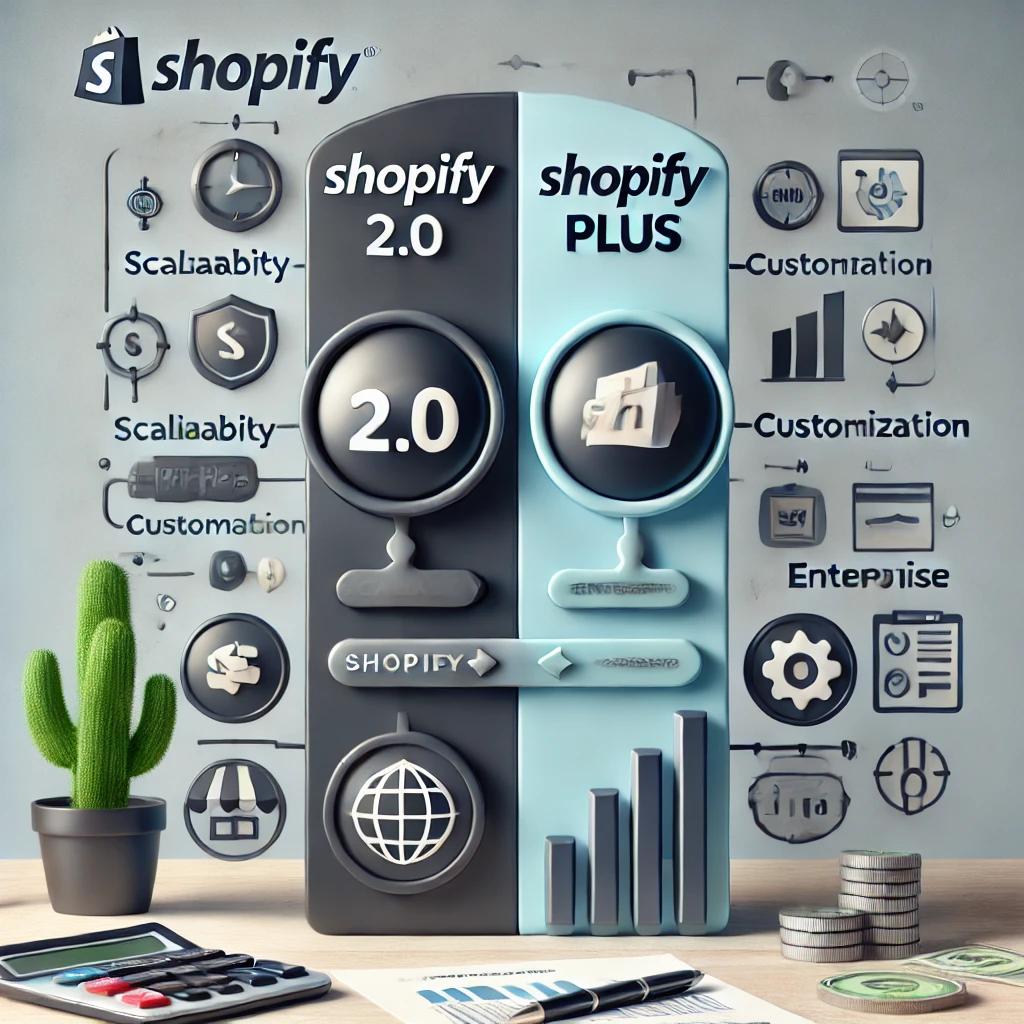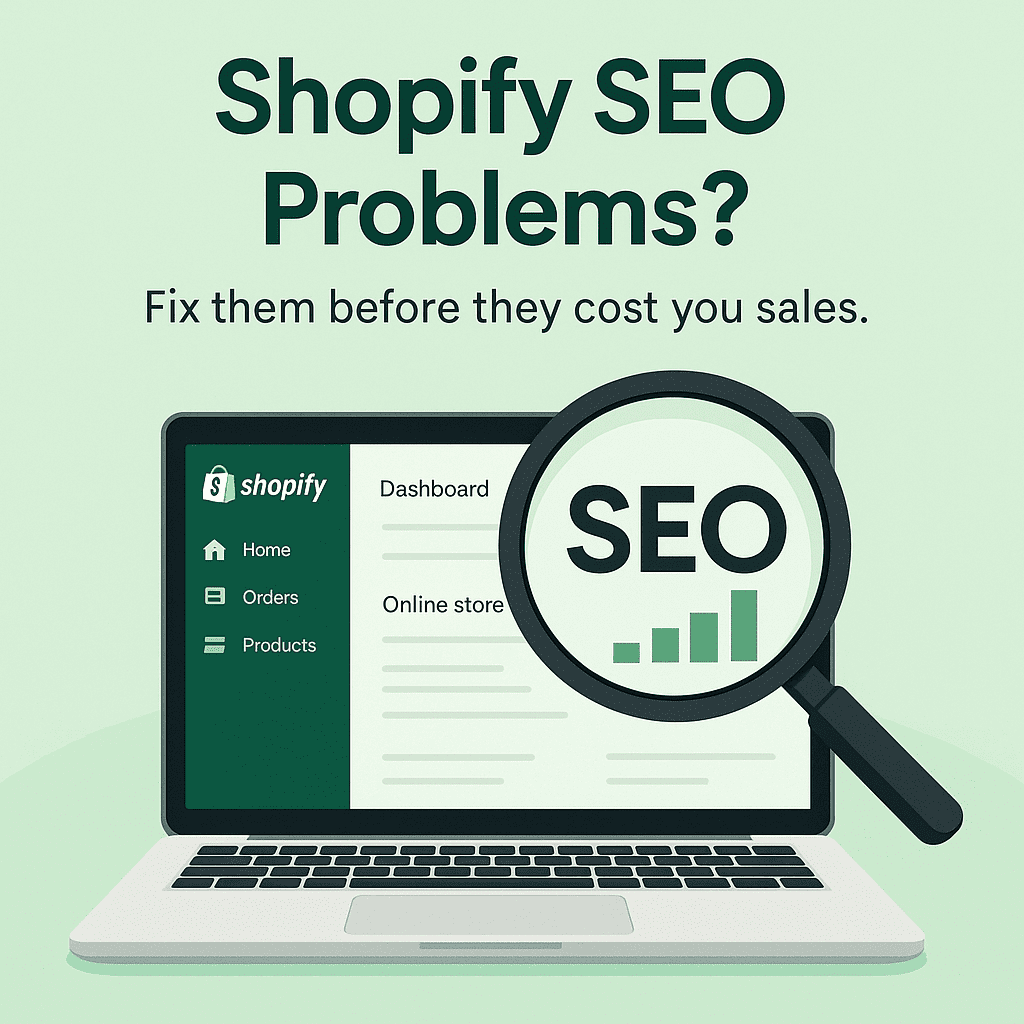Shopify 2.0 vs Shopify Plus – Which Is Better for Scaling?

As eCommerce continues to evolve, choosing the right platform is crucial for scaling your business effectively. Shopify offers two prominent solutions: Shopify 2.0 and Shopify Plus. Understanding the differences between these platforms can help you determine which aligns best with your growth objectives.
Understanding Shopify 2.0 and Shopify Plus
Shopify 2.0 is the latest iteration of Shopify's core platform, introducing enhanced features and greater flexibility for store owners. It's designed to cater to businesses of various sizes, providing tools to create and manage online stores efficiently.
Shopify Plus is an enterprise-level solution tailored for high-growth, high-volume businesses. It offers advanced features, greater customization, and dedicated support to meet the complex needs of large-scale operations.
Key Differences Between Shopify 2.0 and Shopify Plus
To make an informed decision, consider the following distinctions:
-
Customization and Flexibility
-
Shopify 2.0: Offers a robust set of customization options suitable for most businesses.
-
Shopify Plus: Provides advanced customization capabilities, including access to Shopify's underlying code, allowing for tailored solutions to meet unique business requirements.
-
-
Scalability and Performance
-
Shopify 2.0: Designed to handle moderate traffic and sales volumes effectively.
-
Shopify Plus: Built to support businesses experiencing rapid growth, capable of managing high traffic and large transaction volumes without compromising performance.
-
-
Support and Account Management
-
Shopify 2.0: Includes standard customer support channels.Reddit
-
Shopify Plus: Offers dedicated account management and priority support, ensuring prompt assistance and strategic guidance.
-
-
Pricing Structure
-
Shopify 2.0: Features tiered pricing plans ranging from $39 to $399 per month, suitable for small to medium-sized businesses.
-
Shopify Plus: Pricing starts at $2,000 per month, with costs tailored to the specific needs and scale of the business.
-
-
Advanced Features
-
Shopify 2.0: Provides essential eCommerce functionalities, including a variety of themes and apps.
-
Shopify Plus: Includes advanced features such as customizable checkout processes, automation tools like Shopify Flow, and support for international expansion with multi-currency and multi-language capabilities.
-
Implementing One-Page Checkout on Shopify
Streamlining the checkout process can significantly enhance user experience and reduce cart abandonment rates. A one-page checkout consolidates all necessary fields—billing, shipping, and payment information—onto a single page, simplifying the purchasing process.
Benefits of One-Page Checkout:
-
Reduced Cart Abandonment: Simplifying the checkout process can decrease cart abandonment rates by up to 35%.
-
Increased Conversion Rates: A more efficient checkout experience can lead to a 20% increase in conversions.
-
Enhanced User Experience: Customers appreciate a faster, more straightforward checkout process, which can improve overall satisfaction.
How to Enable One-Page Checkout:
-
From your Shopify admin, navigate to Settings > Checkout.
-
In the Checkout customization section, create a draft checkout or customize an existing one.
-
Within the checkout editor, click on the Settings icon.
-
Scroll down to find the layout switcher and select the one-page design.
This feature is available to Shopify Plus users, providing greater control over the checkout experience.
Actionable Tips for Improving Shopify Store Performance
To optimize your Shopify store for better performance and scalability, consider the following strategies:
-
Optimize Site Speed
-
Compress images and utilize efficient coding practices to reduce load times.
-
Use a content delivery network (CDN) to deliver content faster to users globally.
-
-
Enhance Mobile Responsiveness
-
Ensure your store's design is mobile-friendly, providing a seamless experience across all devices.
-
Test your site's performance on various screen sizes to identify and fix any issues.
-
-
Implement SEO Best Practices
-
Conduct thorough keyword research to identify terms your target audience is searching for.
-
Optimize product descriptions, meta titles, and URLs with relevant keywords.
-
Regularly update your blog with valuable content to drive organic traffic.
-
-
Utilize High-Quality Visuals
-
Use professional images and videos to showcase your products effectively.
-
Implement zoom-in features and 360-degree views to provide detailed product insights.
-
-
Leverage Customer Reviews and Testimonials
-
Encourage satisfied customers to leave reviews to build trust and credibility.
-
Display testimonials prominently on product pages to influence purchasing decisions.
-
-
Implement Abandoned Cart Recovery
-
Set up automated emails to remind customers of items left in their cart, offering incentives to complete the purchase.
-
Analyze reasons for cart abandonment and address any recurring issues.
-
Conclusion
Choosing between Shopify 2.0 and Shopify Plus depends on your business's current needs and future growth plans. Shopify 2.0 offers a solid foundation for small to medium-sized businesses, while Shopify Plus provides advanced features and scalability for enterprises aiming for significant expansion. By understanding the key differences and implementing strategies like one-page checkout, you can enhance your store's performance and provide




